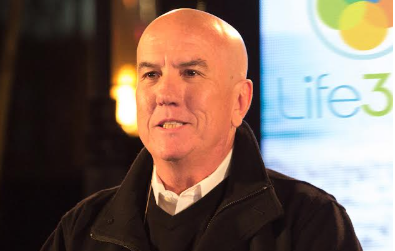
Kent Dicks is an award-winning serial entrepreneur and recognized as a thought leader in the Mobile and Digital Health space. Kent was a leading pioneer in the evolving mHealth field with his previous company, MedApps, which helped drive development of cloud-connected health solutions and provided the industry with much needed alternatives to enable a lower cost, proactive healthcare model. His desire to broaden accessibility to transformative remote healthcare solutions led to the founding of Life365 – a highly scalable, Digital Health Platform. Before Life365, Kent led his previous start-up, Medapps, to acquisition by Alere, Inc. (now Abbott Labs). Kent served as CEO in Alere’s Connected Health Global Business Unit.
Q: What is the current state of veterans’ healthcare?
The Veterans Health Administration (VHA) today is stepping up to the challenge of expanding care access. The VHA is expanding its decades-old successful remote patient management (RPM) program and deploying advanced technologies not just to provide care, but to anticipate care needs. For its part, the Department of Veterans Affairs (VA) is simultaneously expanding care access while reducing costs through preventive and proactive action focused on chronic condition management and identifying the earliest signs of an urgent health problem.
Ensuring access to care for veterans is becoming increasingly urgent because medical expenses more than double between ages 70 and 90 and, as of 2021, nearly half of veterans were age 65 or older, while more than three-quarters were age 50 or older. To meet this growing demand, we must rely on advanced technologies, such as AI, that are scalable.
Q: How are social and geographical barriers being addressed in veterans’ care?
The VA faces an older, sicker, highly rural patient population. One-third of veterans who receive care from the VHA live in a rural area compared to only about one-fifth of all Americans. At the same time, approximately 42% of older veterans report a disability, compared to 33% of older non-veterans.
Veterans living in rural areas are also likely to have more complex medical conditions and are more likely to be diagnosed with diabetes, hypertension and heart conditions than veterans residing in urban areas. Social and geographic barriers to receiving in-person care threaten veterans’ safety and health while potentially driving up care costs through more frequent emergency care and hospitalizations.
In 2019, the VHA created the Veterans Community Care Program, which enables veterans to obtain care from non-VA healthcare facilities when wait times exceed designated limits. This has been helpful for some veterans who live far from a VA facility. The problem is that this program in 2023 accounted for 39% of the VA’s contractual expenses, up from only 9% in 2018. By overburdening community providers, we may be creating a care-access crisis if an effective relief valve is not implemented soon.
The number of older veterans is growing, and so is the need to move healthcare closer to these Americans who have honorably served their country. We need to stop spending billions of dollars to build hospitals that are not close to veterans. Two far better solutions are to move toward decentralized facilities – Valor Healthcare, for example, operates clinics across 18 states, including those that are sparsely populated – and bring virtualized care into the veteran’s home.
Q: What impact are RPM and telehealth making on the market, especially for veterans?
Tech-enabled remote patient monitoring (RPM) and telehealth have been among the most adopted programs in healthcare since the COVID-19 pandemic forced providers to reimagine and overhaul how they deliver care. But the VA was an early adopter, launching its “Home Telehealth” program in 2003 to use remote care technology and workflows for managing chronic conditions. In 2023, more than 2.4 million unique veterans received such virtual care, approximately 40% of that patient population.
Further, the 132,000 veterans participating in the VA’s Remote Patient Management-Home Telehealth (RPM-HT) program experienced a 41% reduction in hospital admissions, while the length of their hospital stays was reduced by approximately 70%. Under this program, RPM-HT participants input vital signs, such as temperature, blood glucose levels, blood pressure and heart rate, and share them with a remote clinician who uses data analytics technology to identify potential problems and intervene before more critical care is required.
Q: How has care delivery changed?
The biggest change in care delivery is the increasing use of RPM and telehealth, truly transformational. New tech-enabled workflows can notify clinicians if veterans at home may require support from a live provider or simply an automated digital “nudge” to take their medications or answer health-related questions.
Bringing technology into the homes of veterans eliminates a major barrier to care. But it can’t be all about technology; we will always need expert human clinicians to review, approve, or modify any interventions based on their knowledge and experience. While machines are invaluable for offering insights and guidance, technology tools aren’t going to make clinical decisions about the care of our veterans. That’s up to humans.
Q: To what extent can data help offer better healthcare?
Quality data provides the fuel for analytical insights that can be used by clinicians to identify early disease indicators before symptoms appear and then deliver precise treatments to prevent the illness from progressing. Data empowers clinicians to pursue preventive and personalized care strategies for veterans.
The VHA’s Office of Connected Care (OCC) in 2021 announced a $1 billion expansion of its RPM/virtual care program. This funding allows for real-time data aggregation and analysis supported by emerging AI tools. Instead of trying to distribute hundreds of thousands of health-monitoring devices to veterans around the country, the OCC is investing in small, wearable biosensors and everyday home medical devices, such as blood pressure cuffs and weight scales. These connected devices supply data that will be combined with information from the VA’s electronic health records for automated data analytics.






